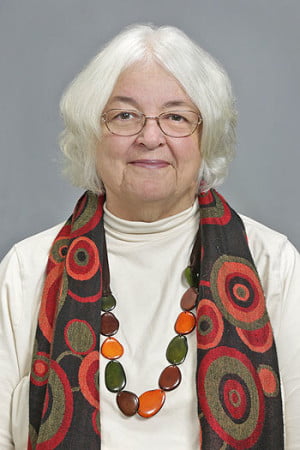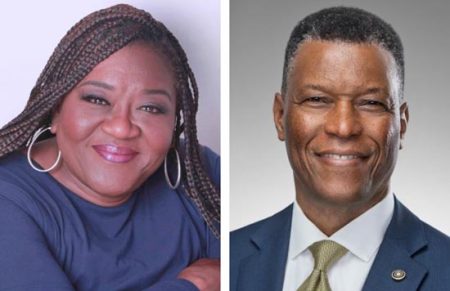Looking for Justice in All the Wrong Places?
Some of the facts that were prowling behind the robes of “justice” in this country could have profound political ramifications.

Photo: Tim Barnwell
Legislative News by Nelda Holder –
Scrutiny of the American “justice” system (starting at the top) has been a mainstream topic recently, perhaps more so than in many years … or perhaps all its years.
The glaring and unprecedented release of a United States Supreme Court draft opinion earlier this summer was a first, with profound political ramifications and at this point in time with no responsibility assigned.
This preceded—but foretold—the history-shattering decision that erased 50 years of court guidance from the Roe v. Wade Supreme Court case which, in 1973, had assured American women that they held autonomy over their own bodies in terms of decisions regarding pregnancy.
That topic, and its profound ramifications, will not be settled in American society for some time to come—if ever. But to take nothing from its profound implications regarding women’s rights in this “democracy,” there follows in its wake a wave of attention to the court system itself. And many Americans have come to recognize a truth that has been staring them in the face, in their ordinary lives, in their ordinary bedrooms, in their perceived freedoms.
Suddenly, several pieces of information crystallized regarding our court system. Here are some of the facts that were prowling behind the robes of “justice” in this country.

Photograph by Fred Schilling, Collection of the Supreme Court of the United States
The US Supreme Court, at the time of this Roe v. Wade invalidation, consisted of seven men (one Black) and two women (one Hispanic). But the country as a whole consisted of some 57.8% White, 18.7% Hispanic, 12.4% Black, and 4% Asian people. Very importantly, the population of the country reflects a female majority, at 50.5%.
The Supreme Court’s membership at the time of this decision also reflected the following faith traditions, certainly a potential weighty factor in this particular case: one Protestant/Episcopalian (Neil Gorsuch, who was raised Catholic); two Jewish (Stephen Breyer and Elena Kagan; and six Catholic (John Roberts, Clarence Thomas, Samuel Alito, Sonia Sotomayor, Brett Kavanaugh, and Amy Coney Barrett).
The subsequent retirement of Justice Breyer and addition of Justice Ketanji Brown Jackson, who claims to be “nondenominational Protestant,” increased the Black members of the court by 100 percent, and did the same for the Protestant category, while moving Jewish membership to just one. Catholic membership remains at six.
How might this compare to the country’s population as a whole? Acknowledging that there is no requirement for “balance” on the court, the population of this country identifies as approximately 45% non-Catholic Christians (compared to 22% of the Supreme Court members); 22% Catholic (67% of the Court); and 2% Jewish (11% of the Court, as represented by one member).
State Supreme Courts Tell Varying Stories
The nonprofit Brennan Center has also taken a look at state supreme courts, with its latest demographics gathered earlier this year. Key findings include the following:
- In 20 states, no justices identify as a person of color
- In 28 states, there are no Black justices
- In 39 states, there are no Latino justices
- In 43 states, there are no Asian American justices
- In 47 states, there are no Native American justices
Men hold 59% of state supreme court seats, the study reveals, and nine state supreme court benches include only one woman.
For reference, here are the most recent racial composition statistics for our state (from World Population Review):
- White: 67.58%
- Black or African American: 21.35%
- Two or more races: 3.64%
- Asian: 2.97%
- Native American: 1.16%
- Native Hawaiian or Pacific Islander: 0.07%
Where does North Carolina fit into the state snapshots? First, a bit of history.
The North Carolina Supreme Court
Originally, what functioned as basically a supreme court for this state was called the Court of Conference, created in 1799, and for which several NC Superior Court judges would sit en banc twice a year to review appeals. The name was changed to Supreme Court in 1805, and in 1818 the NC General Assembly created a distinct body with members chosen by the assembly and serving for life, or “during good behavior” (according to Wikipedia).
This lasted until 1868, when the newly adopted state constitution decreed that each justice would be elected by the people to serve eight-year terms—without term limits (other than reaching the age of 72). Originally, these elections were partisan, but a Democratic-majority legislature changed that provision to nonpartisan in the 2004 elections. A Republican-majority General Assembly made them partisan again after 2016.
Interestingly, the state’s Supremes had a female majority from 2011 until 2014. Of course, there is no way to precisely tie that to the nonpartisan nature of the elections! The first female justice on the court was Susie Sharp (1962), who later became the first female chief justice. The first Black justice on the high court was Henry Frye (1983). And the first Black female to serve as chief justice was Cheri Beasley, appointed to that office by Gov. Roy Cooper (D) in 2019.
Note: Beasley, who served as a judge for both the NC Court of Appeals and the NC 12th Judicial District, was the first Black woman elected to any statewide office in NC without being first appointed by a governor. She is currently a candidate in the race for US Senate, to be decided this fall. Her opponent is third-term Republican Congressman Ted Budd of District 13.
Other Minority Representation
North Carolina is one of 15 states where Latino residents make up 10% or more of the population, but have no Latino members of the state Supreme Court. Neither does this state’s Supreme Court have an Asian justice, nor a Native American justice. Overall, NC falls below the middle line of proportionate representation.
There was, however, a “first” in 2021 regarding Native American representation in the state’s judicial system. Judge Angelica Chavis McIntyre was appointed by Chief Justice Paul Newby as chief district court judge for Robeson County. McIntyre had been elected to the district court bench in 2018, making her the youngest female judge in the state (she was 28 at the time).
Meanwhile, the ubiquitous Democrats and Republicans are easy to find. There are currently four Democrats and three Republicans on the NC Supreme Court. With two open seats for the court in November’s partisan election, a possibility exists for a change in majority from Democratic to Republican. In that election, incumbent Associate Justice Sam Ervin IV (D) is being challenged by Trey Allen (R), and current Court of Appeals Judge Lucy Inman (D) is running against another current Appeals Court judge, Richard Dietz (R), for the second open seat on the highest court. We’ll be taking a closer look at the four candidates prior to the November election.
Note: Information for the brief overview of the North Carolina courts is from several sources, including Wikipedia and The Brennan Center. But for a more fulsome and colorful history, we recommend an online source titled The History of North Carolina Courts, which can be found at nccourts.gov. It’s a brief but fascinating history outline put together to aid judges, lawyers, court personnel and volunteers to share the court’s history effectively with civic, social and school groups and organizations—created on the occasion of the 50th anniversary of the NC District Courts in 1966.
Meanwhile, in the Governor’s Office—the 2022 Budget is Signed
Lacking—yet again—the long-sought Medicaid expansion, the Legislature has finally managed to pass a budget, which Gov. Roy Cooper signed into law on July 11. That Medicaid expansion has been a sticking point for a decade, and there was wider hope in 2022 that the Republican leadership in the General Assembly was going to allow passage. But at the last minute, they found a way to punt the subject to an oversight committee which will supposedly develop a plan by December 15.
A brief glance at House Bill 103, the 2022 Appropriations Act, gleans several matters worthy of note:
- The 2022-23 budget is 193 pages long
- It weighs in at $27,902,204,974 in total appropriations
- Teachers have been given average pay raises of 4.2% (this replaces the 2.5% average in last year’s budget)
- $32 million is allocated to the School Safety Grant program
- $1 billion goes into a new fund, the State Inflationary Reserve
- State employees get an additional 1% raise, added to their 2.5% raise effective July 1
- 2% of the state sales tax will be redirected to the NC Department of Transportation instead of the state’s general fund
- The State Inflationary Reserve was created with a $1 billion allocation
- Economic development projects received $875 million, with $450 million of that designated for a “transformative” project
And finally, the governor vetoed two particularly controversial bills: HB 49 (Concealed Carry Permit Lapse revision), and SB 101 (Require Cooperation with ICE).
A busy few weeks indeed!
Nelda Holder is the author of The Thirteenth Juror – Ferguson: A Personal Look at the Grand Jury Transcripts.








